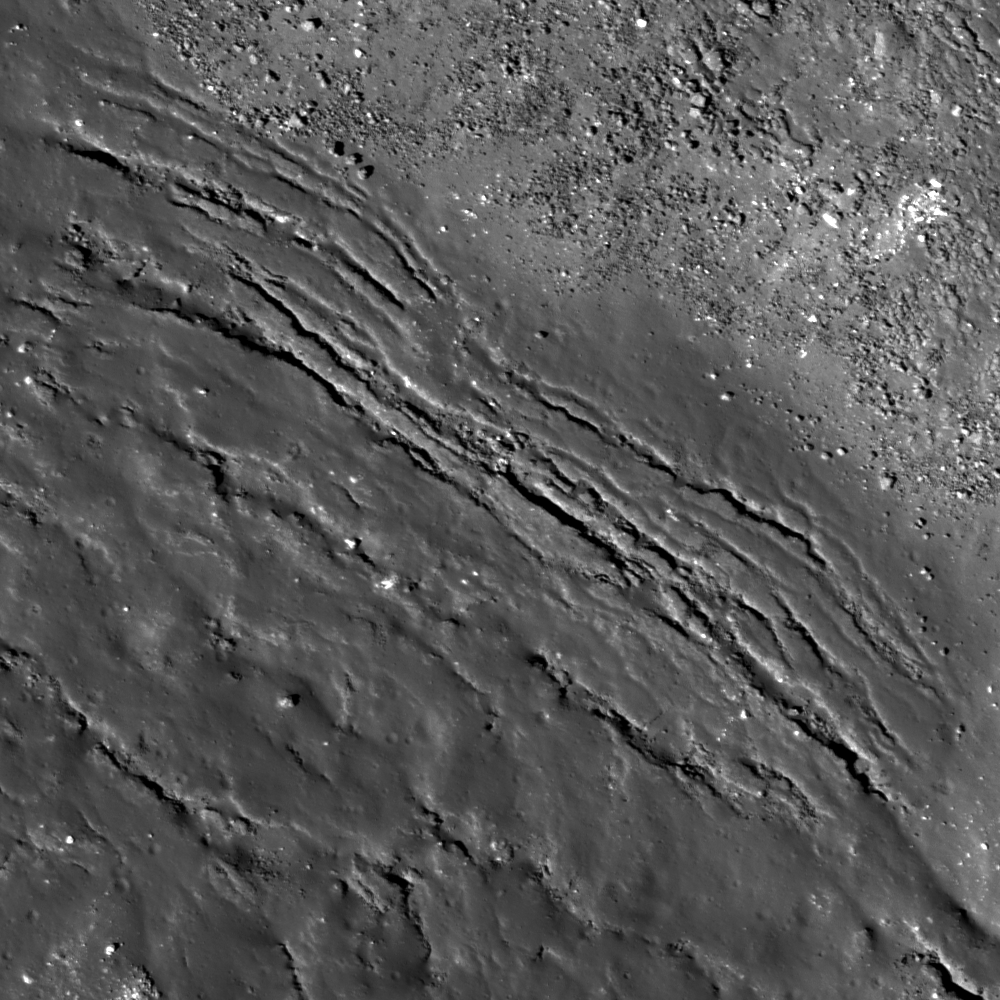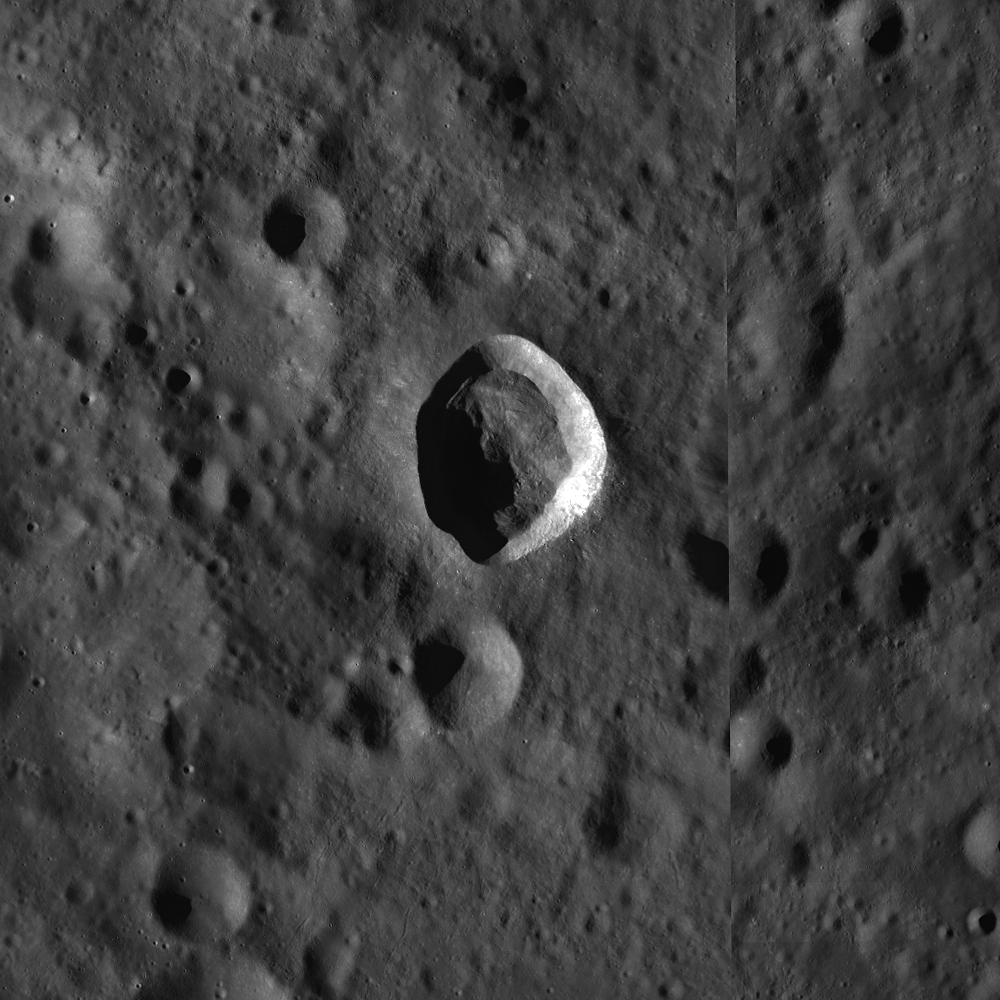
The crater Larmor Q, located at 28.630°N, 176.240°E, is 18.3 km in diameter, has slumped walls, and impact melt in its floor. The Featured Image shows fractures within this impact melt at the boundary of boulder-rich slumped material and the impact melt pool itself. The fractures may have formed two ways: from post-impact modification of the crater floor, or from a volume change associated with the cooling of the impact melt. Post-impact modification means that the shape of the crater changed, due to slumping walls, or changes in the crater floor topography caused by strain due to the redistribution of material during the impact itself.
The fractures are closer together (denser) near the edge of the impact melt. This may be where the impact melt is the thinnest, depending on the topography of the crater floor. Imagine an empty bowl (the crater) and then fill the bottom 5% of the bowl with ketchup (impact melt). The ketchup will be shallowest closest to the sides of the bowl. Often impact melt pools are not of uniform thickness due to variations in the shape of the crater's floor. Also, within the same crater there may be multiple impact melt pools of different overall depths since the emplacement of melt is not symmetric with respect to the crater.
When a lava (or impact melt) cools, it reduces in volume, which may have formed these cracks. Or, the thinnest part of the impact melt might be expected fracture more in the case of changes in the floor topography. Lunar scientists will have to study fractures in impact melt pools to determine which of these answers is correct. Perhaps it is a combination of the two causes of fractures, or something not yet considered.
Find other areas in Larmor Q where fractures are denser towards the edge of the impact melt in the full NAC frame!
Related Posts:
Melt Fractures in Jackson Crater
Published by Sarah Braden on 29 February 2012
